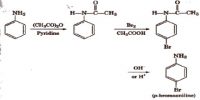This quantity is not a performance criterion in lubricant motor oil performance. That is not to say that it is of no interest: information on the variation in vapour pressure of such an oil across the temperature range it experiences is required. At 300°C it can be as high as 0.05 bar. Values (in mm Hg) for a lubricant oil of kinematic viscosity 82 cSt at 40°C are given in across the temperature range 40 to 290°C. At 40°C the value is 2.5 x mm Hg (0.25 torr), and this rises to 7.4 mm Hg at 290°C.
The value of the heat of vaporisation corresponds exactly to that for eicosane – C20 H42 – a straight chain alkane which has itself found application as a lubricant. There is even a blog on eicosane as a lubricant, in which it has been suggested that its viscosity is on the low side. This point is examined below.
The dynamic viscosity of eicosane at 50°C is:
0.00316 kg m-1 s-1
Using a density of ≈ 750 kg m-3
ⱱ = (0.00316/750) m2 s-1 = 4.2 x 106 m2 s-1 = 4 cSt approx.
which is a low value but not so much so as to preclude lubricant use. A more conventional engine lubricant will have a lower viscosity than this in the hottest places where the lubricant is circulated.












